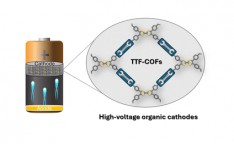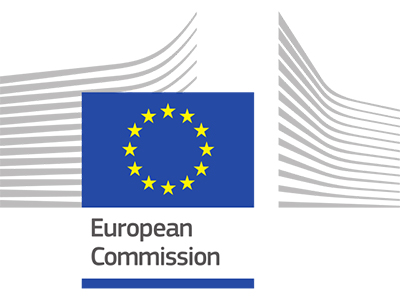Description
One of the main concerns of modern society is reducing its dependence on fossil fuels. Due to their low cost and low environmental impact, electrical energy storage devices are among the most promising alternatives to conventional fossil fuels, as the electricity generated from renewable sources may be efficiently stored. In particular, lithium-ion batteries LIBs are important power sources for portable electronics and electric cars, as they are more performant than other conventional batteries. However, LIBs raise concerns pertaining the use of transition-metal electrode materials and liquid electrolytes. Conventional LiCoO2 cathodes and graphite anodes have limited energy density, while transition-metal oxide cathodes pose environmental concerns. Liquid electrolytes are volatile and flammable, constituting a serious safety issue as they may lead to explosions if internal short-circuits give rise to thermal runways with oxygen release. The overarching objective of this project is to explore alternative solutions to address these LIBs issues using redox-active Metal-Organic Frameworks MOFs as the electrode materials, and solid Li-glass as the electrolyte. These MOFs are promising crystalline porous electrode materials for energy storage due to their low solubility, high stability, high ionic conductivity, and versatility to tune by chemical design the electrode parameters capacity and working potential. Since most MOFs are insulators, a main challenge is to design MOFs exhibiting high electrical conductivity and stability to enhance the specific capacity and rate performance. This project aims at the design and synthesis of a new family of conductive and highly stable redox-active MOFs to be used as LIBs electrode materials. Construction of such MOFs comprises the judicious choice and functionalization of electroactive organic building blocks to enhance the electrode’s conductivity and capacity and establish novel structure-property relationships. The focus is on the electrode’s key parameters capacity, working potential, stability and electrical conductivity to increase the energy and power densities of the batteries. The improvement of such properties relies on DFT calculations. The novelty of the project lies in the use of unexplored redox-active ligands in tandem with high-valence metals to obtain electrodes with high specific capacity, electrical conductivity and stability. The construction of all-solid-state batteries combining the redox-active MOFs and Li-glass solid electrolyte which exhibits an ionic conductivity comparable to the liquid will be accomplished for the first time. Profiting from their high specific capacity, redox-active MOFs will be constructed from electroactive organic building blocks promising for energy storage applications but that present solubility problems in electrolyte as single molecules. Namely, anthraquinone AQ and tetrathiafulvalene TTF linkers will be combined with high-valence metals to afford stable, high capacity, MOFs cathode and anode materials, respectively. Such electroactive organic linkers will be synthesized via simple chemical reactions and characterized by spectroscopic techniques. Electroactive MOFs will be prepared by optimizing various synthetic parameters to obtain crystalline and highly stable porous materials. Key physical properties, such as capacities, working potentials, electrical conductivity and porosity, will be adjusted by fine-tuning the electroactive organic building blocks and by post-synthetic modifications. MOFs electronic structure will be investigated by theoretical calculations, in order to improve the conductivity and, thus, the electrochemical performance of the ensuing electrode materials. Redox-active MOFs will be exfoliated or deposited as thin films to be used as LIBs electrodes. The thin film’s morphology and thickness will be controlled by adjusting the synthetic parameters and will have a direct impact on the key physical properties of the electrodes. The influence of crystallinity and thickness on the MOFs electrical transport properties will be studied in order to increase the energy and power densities of the electrodes. The interfaces and performance of the batteries will be characterized by Electrochemical cycling, Electrical Impedance Spectroscopy EIS and cyclic voltammetry CV. Solid-state NMR will study the ion dynamics e.g., activation energies, correlating with the theoretical data and impedance spectroscopy. The project multidisciplinary team has much experience on: synthesis of highly stable and electroactive MOFs João Rocha, Manuel Souto, solid-state NMR Luís Mafra, band structure calculations of electroactive molecules and frameworks Manuel Melle-Franco, electrical transport characterization Helena Alves and fabrication of Li batteries using solid electrolyte Helena Braga.
Coordinator
Coordination
Universidade de Aveiro (UA)
Partners
UNIVERSIDADE DO PORTO - FACULDADE DE ENGENHARIA
Groups
G1 - Porous Materials and Nanosystems;
G6 - Virtual Materials and Artificial Intelligence;
G3 - Electrochemical Materials, Interfaces and Coatings;
Outputs
Exploring the Luminescence, Redox, and Magnetic Properties in a Multivariate Metal-Organic Radical Framework
Valente, G; Ferreira, P; Hernández-Rodríguez, MA; Brites, CDS; Amaral, JS; Zelenovskii, P; Paz, FAA; Guieu, S; Rocha, J; Souto, MInsights into NdIII to YbIII Energy Transfer and Its Implications in Luminescence Thermometry
Oggianu, M; Mameli, V; Hernández-Rodríguez, MA; Monni, N; Souto, M; Brites, CDS; Cannas, C; Manna, F; Quochi, F; Cadoni, E; Masciocchi, N; Neto, ANC; Carlos, LD; Mercuri, MLTetrathiafulvalene-based covalent organic frameworks as high-voltage organic cathodes for lithium batteries
Valente, G; Dantas, R; Ferreira, P; Grieco, R; Patil, N; Guillem-Navajas, A; Miguel, DRS; Zamora, F; Guntermann, R; Bein, T; Rocha, J; Braga, MH; Strutynski, K; Melle-Franco, M; Marcilla, R; Souto, MDirect C-H Arylation of Dithiophene-Tetrathiafulvalene: Tuneable Electronic Properties and 2D Self-Assembled Molecular Networks at the Solid/Liquid Interface
Ribeiro, C; Valente, G; Espinosa, M; Silva, RAL; Belo, D; Gil-Guerrero, S; Arisnabarreta, N; Mali, KS; De Feyter, S; Melle-Franco, M; Souto, MOrganic electrodes based on redox-active covalent organic frameworks for lithium batteries
Dantas, R; Ribeiro, C; Souto, MExpanding the horizons of porphyrin metal-organic frameworks via catecholate coordination: exploring structural diversity, material stability and redox properties
De, SDR; Mouchaham, G; Liu, FB; Affram, M; Abeykoon, B; Guillou, N; Jeanneau, E; Grenèche, JM; Khrouz, L; Martineau-Corcos, C; Boudjema, L; Salles, F; Salcedo-Abraira, P; Valente, G; Souto, M; Fateeva, A; Devic, TTuning the electrochemical performance of covalent organic framework cathodes for Li- and Mg-based batteries: the influence of electrolyte and binder
Luzanin, O; Dantas, R; Dominko, R; Bitenc, J; Souto, MGiant Polarization in Quasi-Adiabatic Ferroelectric Na+ Electrolyte for Solid-State Energy Harvesting and Storage
Baptista, MC; Khalifa, H; Araujo, A; Maia, BA; Souto, M; Braga, MHThrough-space hopping transport in an iodine-doped perylene-based metal-organic framework
Valente, G; Esteve-Rochina, M; Paracana, A; Rodriguez-Dieguez, A; Choquesillo-Lazarte, D; Orti, E; Calbo, J; Ilkaeva, M; Mafra, L; Hernandez-Rodriguez, MA; Rocha, J; Alves, H; Souto, MSponsors














